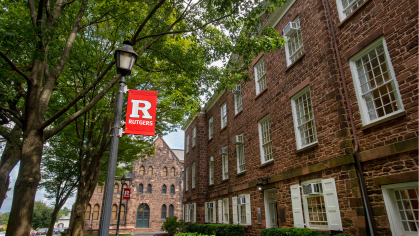Zimmerli Showcases Famed Sculptor (and Rutgers Alum) George Segal
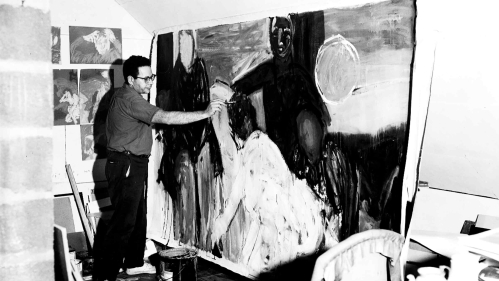
The exhibition, set from Jan. 24 through July 31, features the local artist’s lesser-known work in painting, graphic media and photography
The Zimmerli Art Museum is celebrating the 100th anniversary of the birth of George Segal – a Rutgers alum and one of the most important sculptors of the 20th century – with a retrospective featuring some of his rarely seen works.
As a sculptor, Segal (1924-2000) gained international renown for his plaster casts of people engaged in mundane, everyday tasks. One of his sculptures, Walking Man, stands next to the Zimmerli at the corner of Hamilton Street and George Street in New Brunswick. Segal received the National Medal of Arts from President Bill Clinton in 1999.
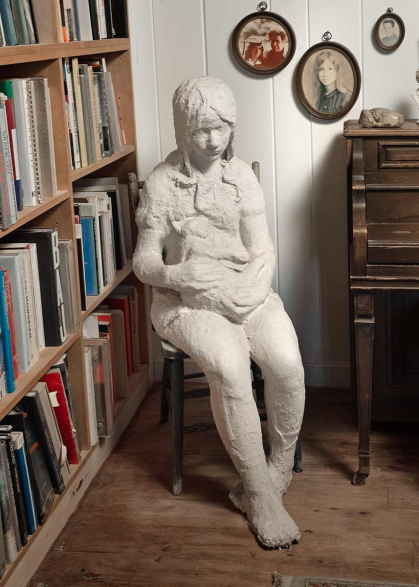
“He is very well known for his plaster-cast figures and his outdoor monuments, but he is less known for the work he did in graphic media, photography and as a painter,” said Donna Gustafson, chief curator at the Zimmerli, which holds the largest collection of Segal’s work in the United States.
Zimmerli officials said George Segal: Themes and Variations examines the artist’s work in all media as a series of variations on themes that he mined throughout his career: figural groups, the nude, still life and portraits. The exhibition – on display starting Jan. 24 through July 31 in the Voorhees Gallery at the Zimmerli, 71 Hamilton St., New Brunswick – is free to all. A reception will be held from 4 p.m. to 7 p.m. Saturday, Jan. 27. Admission is free.
Segal had deep ties to the local area. After marrying his wife Helen in 1946, Segal bought a chicken farm across the road from his parents’ farm in South Brunswick (he converted the coop into his studio and a place to display art) and taught art and English at a local high school and Rutgers University. He earned his master of fine arts degree from Rutgers in 1963.
He would be very happy that people knew about the early paintings, his drawings – just like with any other artist, like Michelangelo.
Rena Segal
George Segal's daughter
“Segal’s farm was a space of avant-garde activity, and the exhibition provides a good accounting of some of the most exciting moments at the farm,” said Zimmerli Director Maura Reilly, adding that the exhibition features photographs of Segal’s South Brunswick studio. “I hope that those who knew Segal and admire his work find this show to be representative of his work, but I also hope that they learn something new about Segal.”
Gustafson said she wanted to highlight some of Segal’s works beyond sculpture while also bringing attention to his love of art history. She noted that while Segal has been featured in four retrospectives at museums and countless exhibitions, the latest showing sheds new light on his work, featuring drawings and sculptures that “make reference to Rembrandt, Cézanne and classical Greek and Roman statuary.”
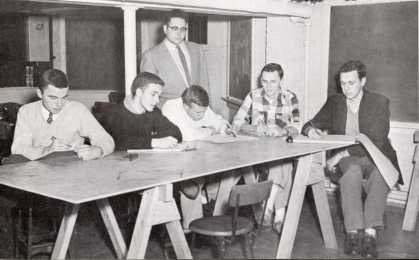
“I was also very interested in thinking about Segal, an internationally known artist, as a very local personality who was deeply rooted in his New Jersey community,” Gustafson said.
Rena Segal, the artist’s daughter who oversees the George and Helen Segal Foundation, said her father would be “very pleased that it's a whole range of what he has done his whole career.”
“He usually was only known for the plasters,” said Rena, who resides in South Brunswick. “He would be very happy that people knew about the early paintings, his drawings – just like with any other artist, like Michelangelo.”
Julie Martin, a Berkeley Heights resident and a board member of the Segal foundation, recalled modeling for George Segal with her husband Billy Klüver in the late 1970s.
“It was really quite a wonderful experience to be cast by him,” Martin said. “Even though he was casting you, he was making decisions as a sculptor about how he wanted it to look. He had an idea of how it would come out and how to cast it.”
Martin added how Segal would incorporate his photography as backdrops for his later work.
“It was very interesting that he was combining the three-dimensional with the flat work and putting them together,” she said.
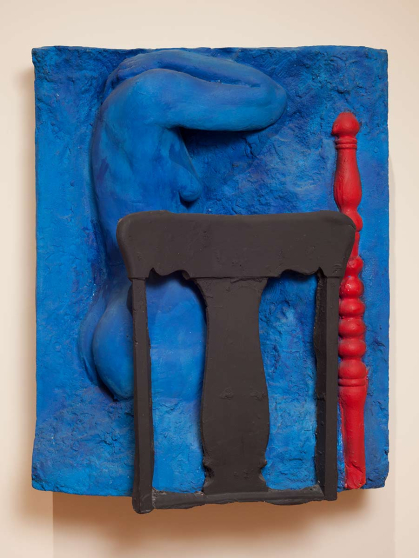
Patrick Strzelec, a retired Rutgers professor who taught sculpture at the Mason Gross School of the Arts, met Segal while working at an art foundry in the early 1980s. An assistant at the time, Strzelec helped the artist with patination, a chemically induced finish formed on a metal surface such as bronze.
“He came in and he wanted to do a white patina, which really wasn't done at all,” said Strzelec, who developed a process involving a “silicone, silica hybrid” kind of surface coating used on auto bumpers.
“I think he would love to have this show,” Strzelec said. “George was very much a New Yorker from the Bronx, but I think that he really embraced New Jersey, living on a chicken farm, building his studios out of the coops and working exclusively at one art foundry in New Jersey. He has some wonderful pieces throughout the state, New York and around the world.”
“I’m particularly interested in surprising people who think they know all there is to know about George Segal,” Gustafson said. “I hope that visiting our exhibition will provide a new perspective on Segal and his work.”

